First Drive: This Porsche 911 Restomod Turned the Classic Ride Into a Supercharged Grand Tourer

The original Porsche 911 Turbo was conceived as a bare-bones road racer—effectively a successor to the now-iconic Carrera 2.7 RS of 1973. The development prototype used a boosted 2.7-liter engine inside the wider body of a 911 3.0 RS, with just 200 examples planned for Group 4 racing homologation.
Having witnessed the sell-out success of the RS, however, Porsche’s marketing department had grander plans. And when the production 911 Turbo debuted at the Paris Motor Show in 1974, it had become a very different beast: a plush super-GT with air conditioning, electric windows and a four-speaker stereo.
More from Robb Report
These 4 Ruf-Tuned Porsche 911s Are Heading to Auction Next Year
This Pristine Porsche 911 Turbo S Just Sold for a Record $1.3 Million at Auction
Forget the Bronco. A Gorgeous Harvester Scout II 4x4 Restomod Is Heading to Auction.
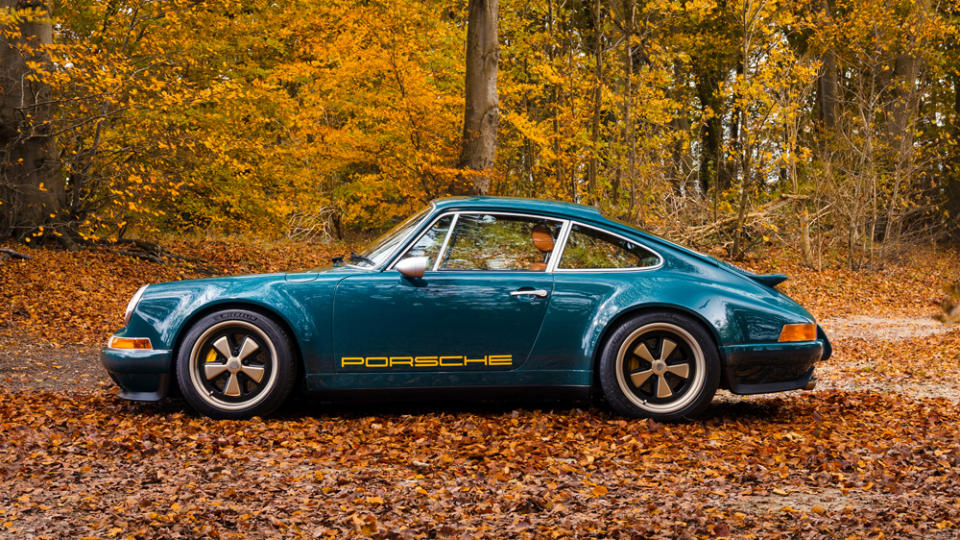
The Turbo—commonly known by its “930” type number—was the undisputed king of Germany’s autobahns, its 3.0-liter flat-six mustering 260 hp for a top speed of 155 mph. It also represented the 911’s first foray into true supercar territory, taking on thoroughbreds such as the Lamborghini Countach and Ferrari Berlinetta Boxer. Bedroom walls had never looked so exciting.
Yet the 930’s engine was also its Achilles’ heel. Its violent, zero-to-hero power delivery could catch drivers unawares, knocking the car off-balance, then frequently backwards into a hedge. Not until the 993 generation of 1995, which introduced twin turbocharging and four-wheel drive, did Porsche finally tame the Turbo.
Adam Hawley, cofounder of Theon Design, is well aware of the Turbo’s “widowmaker” reputation. Indeed, he still has the slightly battered, die-cast 930 he played with as a child on his office desk. So, when a customer requested a 964-based restomod that “combined classic Porsche driving dynamics with real grand-touring ability,” he suggested an alternative approach. “We didn’t want the slam-you-in-the-back Turbo effect,” Hawley says. “Drivability was key. Still, we didn’t realize how challenging building a supercharged 911 would be.”
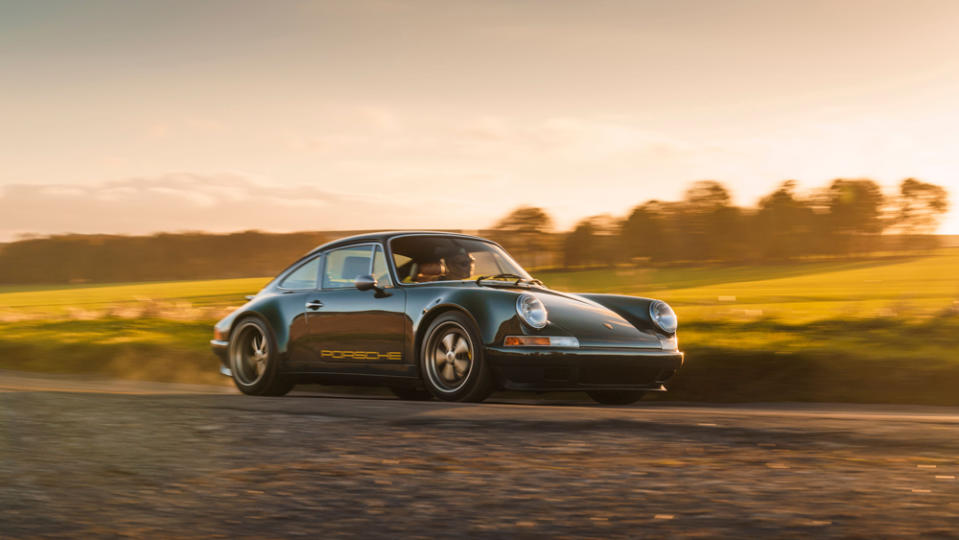
The result is “BEL001,” so-called because it’s the first 911 built by Theon Design for a customer in Belgium. Its 400 hp output is identical to the naturally aspirated “CHI001” commission I drove a few months ago, but the two cars take different routes to get there; one is a rev-hungry road racer, the other a comfortable super-GT. Sound familiar?
The engine bay of any 911 is knuckle-scrapingly tight, especially once you add the apparatus of forced induction. However, by relocating the air-con unit to the front trunk, Theon Design could use the same mounting points to bolt on a centrifugal supercharger. Driven directly off the crankshaft—rather than waiting for a build-up of exhaust gasses like a turbo—it promises a brawny 367 ft lbs of torque and instant right-foot response.
The Danish-made Rotrex supercharger is supplemented by twin charge coolers and a water-methanol injection system, which boosts the fuel octane level (using UK-spec Super Unleaded) from 98 to 110 RON at high revs. These measures also obviate the need for a 930-style top-mounted intercooler and “tea tray” spoiler, or any additional vents in the rear fenders. “Speak softly and carry a big stick” was clearly the mantra here.
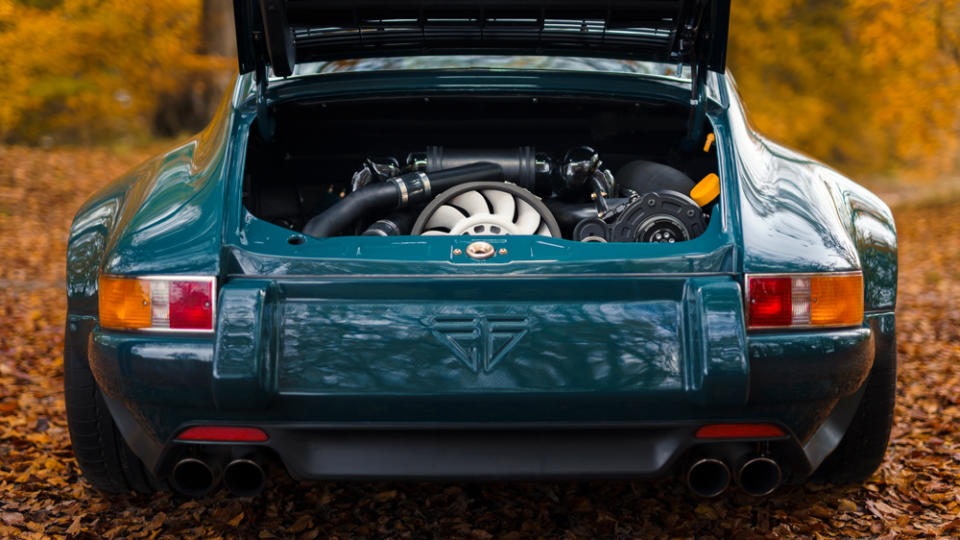
Like all of Theon Design’s cars, BEL001 combines the pre-1974 “long hood” 911 look with a modern and very muscular stance. It rides low on dished Fuchs-style wheels—here with a Champagne gold finish—filling out its fulsome haunches. The all-steel body (carbon fiber is also an option, saving around 250 pounds) is painted in lush Aquamarine, a custom color based on Porsche 356 Fjord Green, with bold yellow graphics and subtle “ghost stripes” above the sills.
The interior is equally classy, with caramel leather swathing the reshaped Porsche “tombstone” seats. And the retro green-on-black dials and plastic switches have been replaced by milled, cool-to-the-touch aluminum. Traditional sliders control the fast-acting electric heater (no more waiting for the air-cooled engine), while a magnetic smartphone mount on the dashboard allows you to operate the Bluetooth audio system. Turn around and the 911’s snug rear seats have been remodeled in the deeper, cocoon-like style of a Porsche 928.
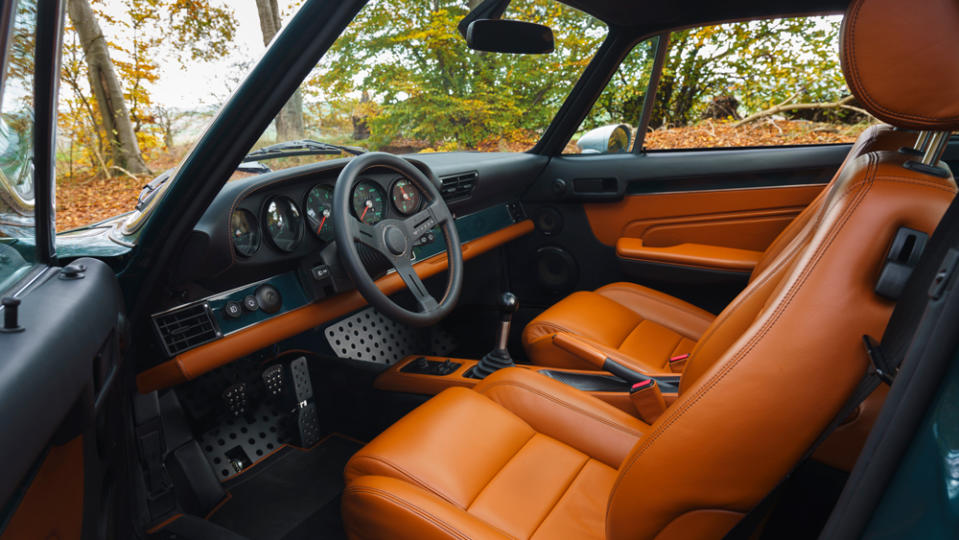
Backing gingerly out of Theon Design’s spotlessly clean workshop—where the company hand-builds around six restomod 911s each year—I find that the 3.6-liter engine sounds smoother and far less rambunctious than the 4.0-liter mill in CHI001. Then Hawley presses a button to open the switchable exhaust valves and the background hum swells to an ominous metallic rumble. That’s more like it.
Compared to the sudden sucker-punch of a 930 Turbo, this car presents a power delivery that’s far more linear, a relentless rush that gains real urgency once the water-methanol injection kicks in beyond 4,500 rpm. Theon Design hasn’t published performance figures, but with a curb weight of just 2,789 pounds, its 911 restomod feels blisteringly quick. It has a uniquely supercharged soundtrack, too: a distant whine punctuated by the hisses and flutters of expelled excess air whenever you change gear.

Where CHI001 used a six-speed transmission from a 993 Turbo, this car retains a rebuilt “G50” five-speed manual transmission, with wider-spaced ratios that suit the vehicle’s calmer, more long-legged demeanor. Likewise, the Tractive adaptive dampers again have five settings, adjusted via a rotary knob on the center console, but here are tuned for a more pliant ride. On our test route, they offered an excellent balance between comfort and control.
Indeed, the writhing roads around Theon Design’s headquarters—located in England’s rural Oxfordshire, close to the Silverstone F1 circuit—feel perfectly suited to this 911. The restomod’s compact dimensions and endlessly animated electro-hydraulic power steering lead to swift and confidence-inspiring progress. I don’t doubt that BEL001 would be refined and amenable (not to mention reliable) enough for epic, trans-European road trips as well—exactly what its Belgian owner has planned.
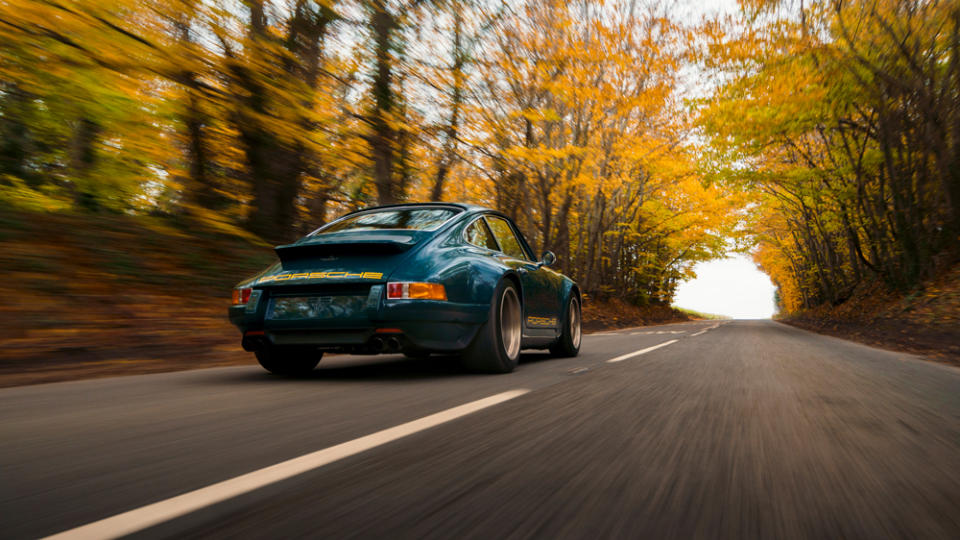
Singer revealed its Turbo Study earlier this year, a “reimagined” Porsche 930 with OEM-style impact bumpers and a tea tray. It’s a cool project that will doubtless look fantastic on a bedroom wall, but Theon Design’s supercharged 911 seems a less obvious, and perhaps less compromised, answer to the same question. A road racer and a super-GT? Oh, yes.
Click here for more photos of Theon Design’s Project BEL001 Porsche 911 restomod.
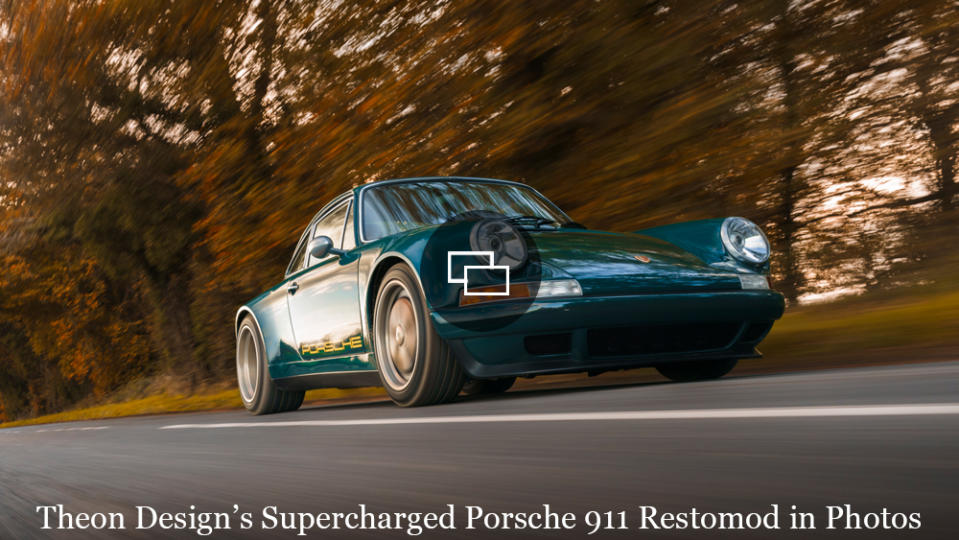
Best of Robb Report
The 15 Best Travel Trailers for Camping and Road-Tripping Adventures
The Chevy C8 Corvette: Everything We Know About the Powerful Mid-Engine Beast
Sign up for Robb Report's Newsletter. For the latest news, follow us on Facebook, Twitter, and Instagram.


